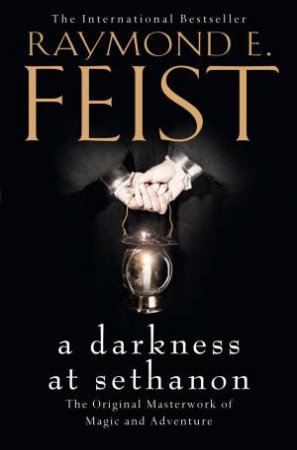


There were enough small changes that even these oh so familiar fantasy tropes were different enough that I could recognise them but also enjoy them anew. There is even a set of magical armour, complete with sword and shield that Tomas picks up from a dragon’s horde after exploring long forgotten caves in a mountain. But it also had some staples from Tolkien (or more accurately from Tolkien via D&D given Midkemia’s origin as a homebrew D&D campaign world) of Elves (and their Dark Elven brethren), Dwarves, and Dragons. Therefore slipping into imagining the world and the setting of the story was relatively effortless. There are warriors and knights, cavalry and sappers, and, of course, archers who would never use anything less than a longbow. There are castles, Dukes, Kings, Princes, lords and ladies aplenty. The Kingdom of the Isles is your usual Anglo-European feudal society with a pseudo-medieval feel to it. The setting itself, Midkemia, is nothing particularly innovative, and as a result I was imminently comfortable with it at the time. Flawed ones, yes, but heroes none the less. I didn’t really need sophistication or exceptionally complex and morally ambiguous characters at that age. If you had been fed a diet of Tolkien, Brooks, Eddings, Dragonlance and Forgotten Realms, this would have seemed original to you too.Īlso, at that age, the idea of a story featuring three different young guys that I could maybe identify with a little, all growing up in different paths, facing hard choices, but ultimately overcoming, was, of course, appealing to my developing adolescent psyche. There wasn’t really a grand prophecy, there wasn’t a Dark Lord™, and the heroes weren’t out seeking a massively powerful magical object that would save the day. So, at that time, it felt original to me. This book focused on an invasion, a slave storyline, a siege, and a confrontation between two cultures. Up until that point, the vast majority of the fantasies I had read were about heroes going on quests and adventures. What intrigued me most about this book was that it didn’t feature a quest. In fact, if there had been a fourth thread about a young boy becoming an assassin then I think Feist would have all the standard fantasy plots essentially covered… but Jimmy the Hand only edges into that in the next volume, Silverthorn. All the typical plots of wish-fulfilment that any young, Anglo-European boy could want rolled up into a single narrative. For Arutha, the young princeling grows into a man and becomes a ruler and leader. For Tomas it is of a popular young keep boy who becomes a powerful magical warrior and essentially an Elf king. For Pug it is the journey from young orphan boy to master magician.

So when reading it as a single volume there is a clear dividing line halfway through the book that allows the narrative to jump several years and pick the story up again.Įach of the plot threads follows a young boy, or in the case of Arutha an argument can be made that he is a young man, as they each follow a different classical fantasy path. The book itself, originally published in two volumes was re-released as a single volume in the UK and then in 1992 on widespread release as ‘the author’s preferred edition’. The story is split into one main thread, Pug’s story, with two mirroring plot threads, those of Tomas, and Arutha. At some point you have to admit that a story is fair game particularly after 30 years. It wasn’t the first fantasy book I ever read, but it has certainly been one of the most influential on my early fantasy reading tastes (even though they have evolved over time) and it really consolidated my love for fantasy.įor those that don’t know it, spoilers abound below, but let’s face it when a book is published in the early 1980s and has been republished many times since, you can’t really call foul on spoilers. I was probably 12 or so when I picked it up in my local Waterstones bookshop. Something a great deal more manageable than the 30 book ‘cycle’ it is now. Feist is the first book of the massive Riftwar Cycle, although back when I read it, all those years ago, it was simply Magician and book one of a trilogy, the Riftwar Saga. But all of them fed into how I came to love fantasy and how I perceive the genre. Some of them have not really stood the test of time, some I grew out of, and others are still great.
THE MAGICIAN BOOK RAYMOND E FEIST SERIES
This is a series of posts about fantasy novels that I love, or loved, and that really got me into fantasy. Favourite Fantasy Books Part 1 : Magician by Raymond E Feist The cover of the first edition of Magician that I ever owned.


 0 kommentar(er)
0 kommentar(er)
